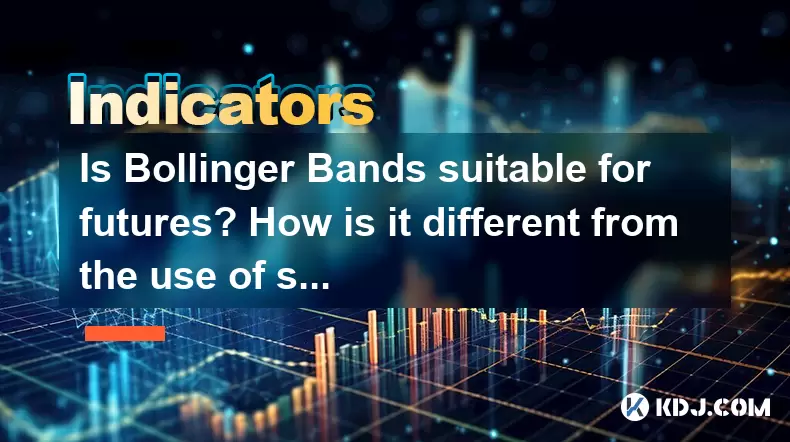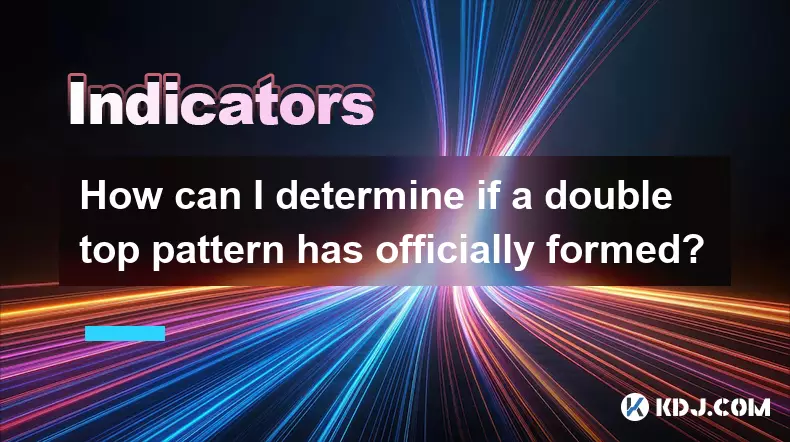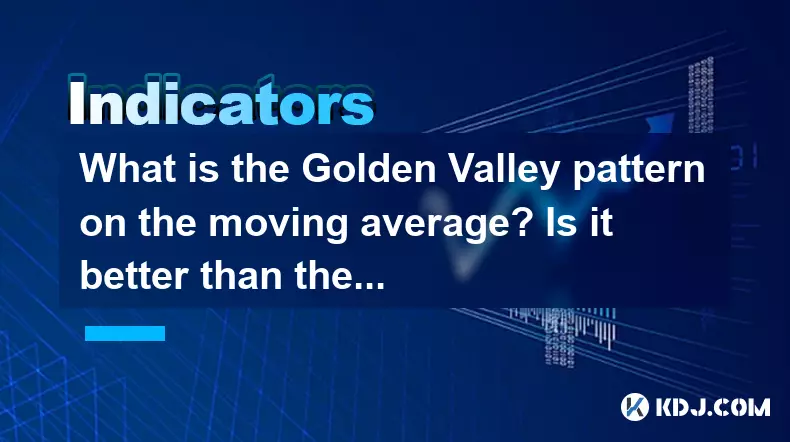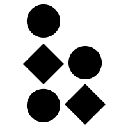-
 bitcoin
bitcoin $124586.364639 USD
0.62% -
 ethereum
ethereum $4670.671710 USD
3.33% -
 xrp
xrp $2.983701 USD
0.18% -
 tether
tether $1.000175 USD
-0.03% -
 bnb
bnb $1209.430642 USD
2.76% -
 solana
solana $231.365861 USD
0.51% -
 usd-coin
usd-coin $0.999665 USD
-0.02% -
 dogecoin
dogecoin $0.264657 USD
4.46% -
 tron
tron $0.346415 USD
1.60% -
 cardano
cardano $0.871586 USD
3.70% -
 chainlink
chainlink $23.451270 USD
7.56% -
 hyperliquid
hyperliquid $46.860071 USD
-2.96% -
 ethena-usde
ethena-usde $1.000120 USD
0.04% -
 sui
sui $3.611279 USD
1.08% -
 stellar
stellar $0.407149 USD
0.96%
Is Bollinger Bands suitable for futures? How is it different from the use of stocks?
Bollinger Bands, developed by John Bollinger, help traders identify overbought or oversold conditions in cryptocurrency futures, aiding in entry and exit decisions.
May 22, 2025 at 01:15 am

Introduction to Bollinger Bands
Bollinger Bands are a technical analysis tool developed by John Bollinger in the 1980s. They are used to measure market volatility and identify potential overbought or oversold conditions. The bands consist of three lines: a middle band, typically a simple moving average (SMA), and two outer bands that are standard deviations away from the middle band. In the context of cryptocurrency futures, Bollinger Bands can be a valuable tool for traders looking to gauge market movement and make informed trading decisions.
Application of Bollinger Bands in Cryptocurrency Futures
In the realm of cryptocurrency futures, Bollinger Bands can help traders identify potential entry and exit points. When the price of a futures contract touches or crosses the upper Bollinger Band, it may indicate that the market is overbought, suggesting a potential sell opportunity. Conversely, if the price touches or crosses the lower Bollinger Band, it might signal an oversold condition, indicating a potential buy opportunity.
Traders often look for specific patterns within the Bollinger Bands to enhance their trading strategies. One popular pattern is the Bollinger Band Squeeze, which occurs when the bands come closer together, indicating a period of low volatility. This squeeze often precedes a significant price move, providing traders with a signal to prepare for potential breakouts.
Differences in Using Bollinger Bands for Futures vs. Stocks
While Bollinger Bands can be applied to both futures and stocks, there are notable differences in their usage due to the inherent characteristics of each market. Cryptocurrency futures are typically more volatile than stocks, which means the bands may widen more frequently and to a greater extent. This increased volatility requires traders to adjust their strategies accordingly.
In the stock market, Bollinger Bands are often used to identify long-term trends and potential reversals. Stocks tend to have more predictable patterns and less extreme volatility compared to futures. Therefore, the signals generated by Bollinger Bands in the stock market might be more reliable over longer periods. In contrast, cryptocurrency futures require more frequent monitoring and quicker decision-making due to their rapid price movements.
Setting Up Bollinger Bands for Cryptocurrency Futures
To effectively use Bollinger Bands for cryptocurrency futures trading, traders need to set up the tool correctly on their trading platform. Here’s a step-by-step guide on how to do this:
- Choose a Trading Platform: Select a reputable platform that supports cryptocurrency futures and offers technical analysis tools, such as TradingView or Binance Futures.
- Add Bollinger Bands: Navigate to the chart of the futures contract you want to trade. Look for the indicators section and add Bollinger Bands to the chart.
- Adjust Settings: The default settings for Bollinger Bands are usually a 20-period SMA for the middle band and two standard deviations for the outer bands. However, traders can adjust these settings based on their trading style and the specific cryptocurrency futures they are trading.
- Monitor the Bands: Keep an eye on how the price interacts with the Bollinger Bands. Pay attention to the squeeze patterns and the price touching or crossing the bands.
Strategies for Using Bollinger Bands in Cryptocurrency Futures
Several strategies can be employed when using Bollinger Bands for cryptocurrency futures trading. One common strategy is the Bollinger Band Breakout. This strategy involves entering a trade when the price breaks out of the upper or lower band, anticipating a continuation of the trend. Traders might set a stop-loss just outside the opposite band to manage risk.
Another strategy is the Bollinger Band Reversal. This approach involves looking for price reversals when the price touches the upper or lower band. Traders might enter a trade in the opposite direction of the current trend, expecting a reversal. This strategy requires careful analysis of other indicators and market conditions to confirm the potential reversal.
Combining Bollinger Bands with Other Indicators
To enhance the effectiveness of Bollinger Bands in cryptocurrency futures trading, traders often combine them with other technical indicators. One popular combination is Bollinger Bands and the Relative Strength Index (RSI). The RSI can help confirm overbought or oversold conditions signaled by the Bollinger Bands, providing more robust trading signals.
For example, if the price of a futures contract touches the upper Bollinger Band and the RSI is above 70, it might confirm an overbought condition, suggesting a potential sell opportunity. Conversely, if the price touches the lower Bollinger Band and the RSI is below 30, it might confirm an oversold condition, suggesting a potential buy opportunity.
Another useful combination is Bollinger Bands and Moving Averages. By adding a shorter-term moving average to the chart, traders can identify additional trend signals. If the price crosses above the shorter-term moving average while touching the lower Bollinger Band, it might signal a strong buy opportunity.
Practical Examples of Bollinger Bands in Cryptocurrency Futures Trading
To illustrate the application of Bollinger Bands in cryptocurrency futures trading, consider the following example. Suppose a trader is monitoring a Bitcoin futures contract on Binance Futures. The trader notices that the price has been trading within a narrow range, causing the Bollinger Bands to squeeze. This squeeze suggests that a significant price move might be imminent.
The trader decides to wait for a breakout. When the price breaks above the upper Bollinger Band, the trader enters a long position, anticipating a continuation of the upward trend. To manage risk, the trader sets a stop-loss just below the lower Bollinger Band. As the price continues to rise, the trader monitors the RSI and other indicators to confirm the trend and decide when to exit the trade.
In another scenario, the trader observes that the price of an Ethereum futures contract has touched the lower Bollinger Band multiple times, indicating potential oversold conditions. The trader enters a short position, expecting a reversal. To confirm the reversal, the trader checks the RSI and other indicators. If the RSI is also indicating oversold conditions, the trader might hold the position until the price rebounds to the middle Bollinger Band or shows signs of a trend change.
Frequently Asked Questions
Q: Can Bollinger Bands be used for day trading cryptocurrency futures?A: Yes, Bollinger Bands can be effectively used for day trading cryptocurrency futures. The bands can help identify short-term overbought and oversold conditions, providing day traders with potential entry and exit points. However, due to the high volatility of cryptocurrency futures, day traders need to closely monitor the bands and adjust their strategies accordingly.
Q: Are Bollinger Bands more effective for certain types of cryptocurrency futures?A: Bollinger Bands can be applied to any type of cryptocurrency futures, but they may be more effective for highly volatile assets like Bitcoin and Ethereum. These assets often exhibit significant price movements, making the signals generated by Bollinger Bands more pronounced and potentially more reliable.
Q: How do I know if a Bollinger Band signal is reliable?A: To determine the reliability of a Bollinger Band signal, traders should consider the overall market context and combine the bands with other technical indicators. For example, if a Bollinger Band signal is confirmed by the RSI or a moving average crossover, it might be more reliable. Additionally, traders should look for consistent patterns and historical performance to assess the reliability of signals over time.
Q: Can Bollinger Bands be used for risk management in cryptocurrency futures trading?A: Yes, Bollinger Bands can be used for risk management in cryptocurrency futures trading. Traders can set stop-loss orders based on the position of the bands. For example, if entering a long position, a stop-loss might be set just below the lower Bollinger Band. Similarly, for a short position, a stop-loss might be set just above the upper Bollinger Band. This approach helps manage risk by limiting potential losses based on market volatility.
Disclaimer:info@kdj.com
The information provided is not trading advice. kdj.com does not assume any responsibility for any investments made based on the information provided in this article. Cryptocurrencies are highly volatile and it is highly recommended that you invest with caution after thorough research!
If you believe that the content used on this website infringes your copyright, please contact us immediately (info@kdj.com) and we will delete it promptly.
- BlockDAG, DOGE, HYPE Sponsorship: Crypto Trends Shaping 2025
- 2025-10-01 00:25:13
- Deutsche Börse and Circle: A StableCoin Adoption Powerhouse in Europe
- 2025-10-01 00:25:13
- BlockDAG's Presale Buzz: Is It the Crypto to Watch in October 2025?
- 2025-10-01 00:30:13
- Bitcoin, Crypto, and IQ: When Genius Meets Digital Gold?
- 2025-10-01 00:30:13
- Stablecoins, American Innovation, and Wallet Tokens: The Next Frontier
- 2025-10-01 00:35:12
- NBU, Coins, and Crypto in Ukraine: A New Yorker's Take
- 2025-10-01 00:45:14
Related knowledge

What is a tower bottom candlestick pattern? Does it have a high success rate?
Sep 22,2025 at 07:18am
Tower Bottom Candlestick Pattern Explained1. The tower bottom candlestick pattern is a reversal formation that typically appears at the end of a downt...

What is a black hole pattern in the MACD indicator? Is it a cause for concern?
Sep 21,2025 at 06:54pm
Bitcoin's Role in Decentralized Finance1. Bitcoin remains the cornerstone of decentralized finance, serving as a benchmark for value and security acro...

How can I use the psychological line (PSY) to determine market sentiment?
Sep 17,2025 at 02:19pm
Understanding the Psychological Line (PSY) in Cryptocurrency TradingThe Psychological Line, commonly referred to as PSY, is a momentum oscillator used...

How can I determine if a double top pattern has officially formed?
Sep 21,2025 at 03:18am
Understanding the Structure of a Double Top Pattern1. A double top pattern consists of two distinct peaks that reach approximately the same price leve...

What is the Golden Valley pattern on the moving average? Is it better than the Silver Valley pattern?
Sep 21,2025 at 02:54pm
Understanding the Golden Valley Pattern in Moving Averages1. The Golden Valley pattern is a technical formation observed in cryptocurrency price chart...

What does a death cross of the RSI in the strong zone (above 50) mean?
Sep 17,2025 at 10:54pm
Understanding the Death Cross in RSI Context1. The term 'death cross' is traditionally associated with moving averages, where a short-term average cro...

What is a tower bottom candlestick pattern? Does it have a high success rate?
Sep 22,2025 at 07:18am
Tower Bottom Candlestick Pattern Explained1. The tower bottom candlestick pattern is a reversal formation that typically appears at the end of a downt...

What is a black hole pattern in the MACD indicator? Is it a cause for concern?
Sep 21,2025 at 06:54pm
Bitcoin's Role in Decentralized Finance1. Bitcoin remains the cornerstone of decentralized finance, serving as a benchmark for value and security acro...

How can I use the psychological line (PSY) to determine market sentiment?
Sep 17,2025 at 02:19pm
Understanding the Psychological Line (PSY) in Cryptocurrency TradingThe Psychological Line, commonly referred to as PSY, is a momentum oscillator used...

How can I determine if a double top pattern has officially formed?
Sep 21,2025 at 03:18am
Understanding the Structure of a Double Top Pattern1. A double top pattern consists of two distinct peaks that reach approximately the same price leve...

What is the Golden Valley pattern on the moving average? Is it better than the Silver Valley pattern?
Sep 21,2025 at 02:54pm
Understanding the Golden Valley Pattern in Moving Averages1. The Golden Valley pattern is a technical formation observed in cryptocurrency price chart...

What does a death cross of the RSI in the strong zone (above 50) mean?
Sep 17,2025 at 10:54pm
Understanding the Death Cross in RSI Context1. The term 'death cross' is traditionally associated with moving averages, where a short-term average cro...
See all articles










































































